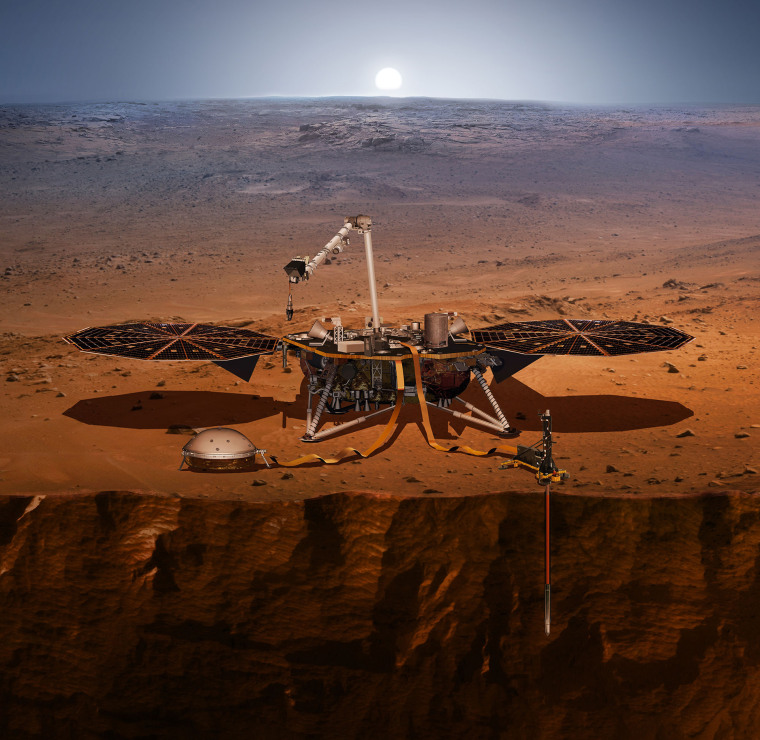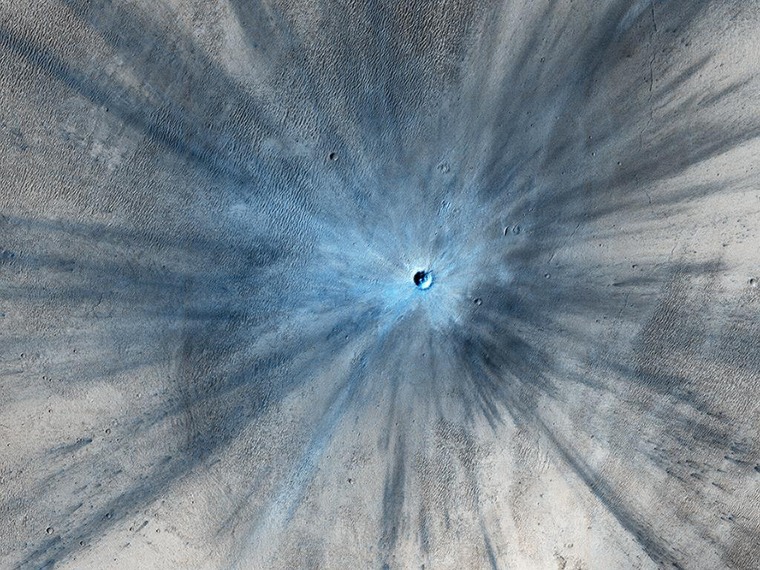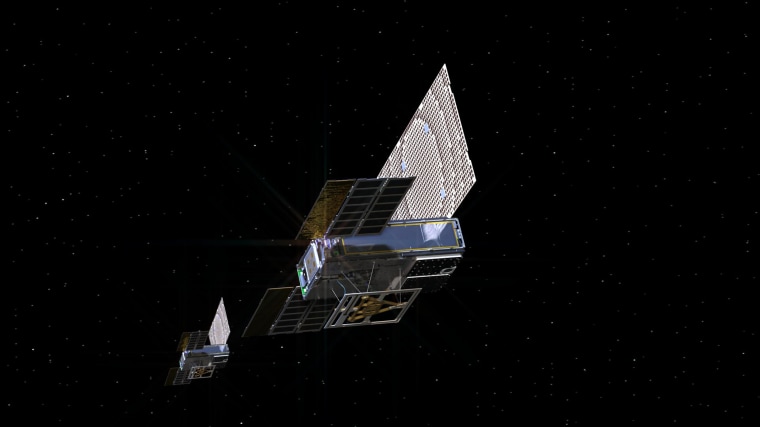Saturday's launch of the $800 million InSight lander will take NASA to the parts of Mars we’ve never seen before. The probe blasted off from Vandenberg Air Force Base in central California on Saturday morning to great fanfare.
When InSight finally reaches Mars on Nov. 26, a system of parachutes and retro rockets will set the probe down on a flat equatorial plain called Elysium Planitia. An 8-foot-long robotic arm will deploy its instruments. Then for 708 Martian days (about two Earth years), the lander will give Mars the astronomical equivalent of a full-body scan.
It may seem strange, but after half a century of exploring Mars we’ve barely even scratched its surface. Many of the big mysteries — including the biggest one of all, whether Mars was ever home to life — are likely buried deep underground. But no probe has dug more than a few inches into the planet’s rusty soil, leaving Mars’ entire inner landscape unexplored.
“InSight is the first geophysical observatory ever on a planet other than the Earth,” says Tilman Spohn, a geophysicist at the German Aerospace Center. Tilman is the principal investigator on one of the lander’s signature experiments: a planetary thermometer called Heat Flow and Physical Properties Probe (HP3).
The InSight mission is designed to provide definitive answers about whether Mars is alive or dead in the geologic sense. Along the way, though, the probe will also help scientists understand if the Red Planet was ever alive in the organic sense, too.
Here are seven things to know about NASA’s InSight mission.
InSight will dig deeper than ever before.
The HP3 experiment will make precise measurements of Mars’s internal heat, left over from its formation 4.5 billion years ago and stoked by the decay of radioactive elements. To do that, the probe incorporates a self-hammering “mole” that will burrow up to 16 feet into the ground. This will be the deepest drilling ever done off Earth. Along the way, the probe will send out pulses of heat every 20 inches to study the nature of the underground rocks.

When it reaches full depth, HP3 will be completely isolated from the surface environment, sensitive only to the slow trickle of Mars’s primordial fire.
It will take the temperature of the whole planet.
“Heat flow tells us about Mars’s geologic engine — the amount of heat energy available today to drive geologic activity,” says Sue Smrekar, a planetary scientist at NASA’s Jet Propulsion Laboratory. “We can also extrapolate backwards in time, to estimate how much energy was available in the past.”
Mars is home to huge volcanoes including Olympus Mons, the largest in the entire solar system. Smrekar expects that readings from HP3 will help explain how these monsters formed, and how Mars turned cool and sluggish while Earth remained dynamic.
InSight will feel Mars tremble.
Along with the heat probe, InSight’s robot arm will also deploy a 65-pound, dome-shaped instrument called the Seismic Experiment for Interior Structure, or SEIS. It will be the first proper seismic station ever placed on another planet. (NASA tried once before in 1976 with its Viking probes, but the experiment never returned clear results.)
SEIS is so sensitive that it can detect motions as small as a hydrogen atom. The results will complement the data from HP3, revealing whether Mars still retains traces of youthful geologic restlessness. “We anticipate that we will hear some marsquakes that are caused by cracking of the crust and remnant tectonic activity,” says Sharon Kedar of JPL, the U.S. co-investigator on the SEIS experiment.
It will hear Mars hum and ping.
SEIS’s sensors will reach not only to the center of Mars, but into the atmosphere and up into space. “We believe that we will be able to detect seismic waves generated by dust devils, as well as the continuous generation of seismic waves by the Martian atmosphere — what we call ‘hum’ on Earth,” says Philippe Lognonné, a planetary seismologist at Paris Diderot University and the principle investigator on the SEIS experiment.

The instrument will also listen for the signals of small asteroid impacts, collecting statistics on how much material comes raining down on the Red Planet. This information will help predict the frequency of impacts on Earth as well.
It will create a planetary 3-D scan.
Much as doctors use CT scans to look inside a patient, InSight scientists will analyze seismic waves to reconstruct a three-dimensional model of the Martian interior. Right now, Earth is the only planet we’ve examined that way. “It will be extremely exciting to peer into the deep interior of another rocky planet and learn the story it tells us about its evolution,” Kedar says.
The chemical elements distributed inside Mars act as a record of where and how it formed in the solar system. That information will help explain why Earth emerged so much bigger and more hospitable than Mars, and will help guide the search for life on planets around other stars.
InSight will travel with two special little guests.
When it reaches Mars, InSight will not be alone. The space probe was launched alongside two experimental CubeSats, briefcase-size spacecraft built around off-the-shelf structures.

Nicknamed Eva and Wall-E, they will be the smallest probes ever sent to another planet. They are mostly technology demonstrators, intended to test novel, flat radio antennas and other miniaturized components. If Eva and Wall-E succeed, however, they open vast potential for new low-cost, quick-turnaround space missions.
It will tell us if Mars is alive.
A surprising message from the InSight team is that the geological life of a planet and the biological life of a planet go hand in hand. “What happens in the interior of the planet matters for what goes on at the surface,” Smrekar says. Ancient volcanic activity helped build up the Martian atmosphere. Heat flowing from the interior regulates when and where underground liquid water could occur. These factors are crucial for determining whether Mars ever had life, or if some survivors could still be hunkered down in deep places where we’ve never searched before.
Life needs water, Smrekar notes. “And if we want to fully understand the history of water, we need to look deep.”
